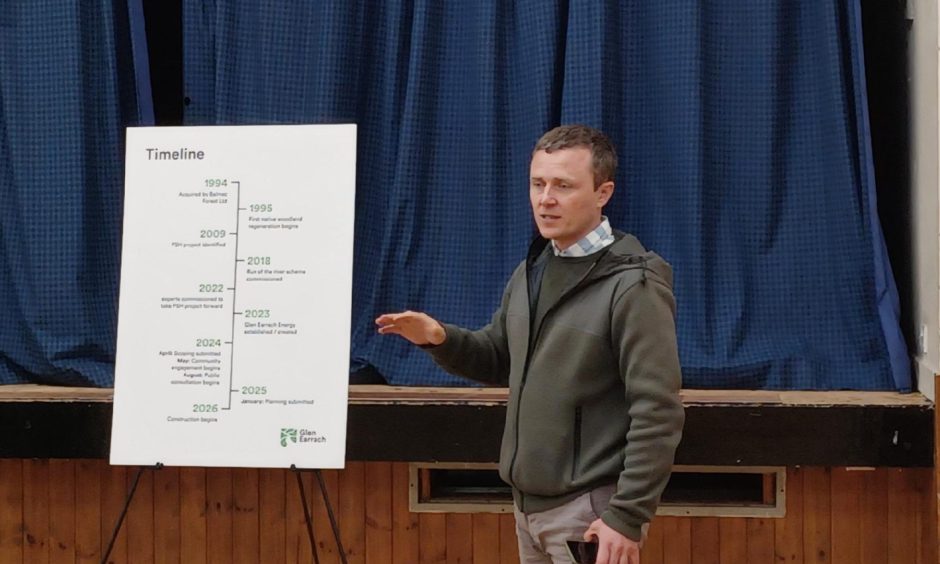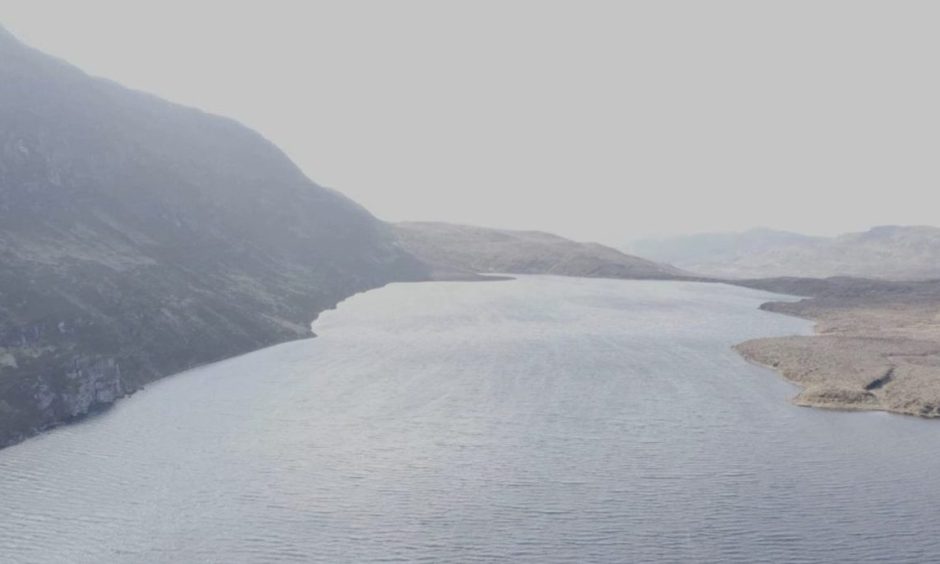Developers behind a £3 billion hydro scheme on Loch Ness have been told they risk damaging the famous waterway and its ecosystem.
The Glen Earrach Energy (GEE) project is earmarked for the Balmacaan Estate, about six miles south of Drumnadrochit.
Director Roderick MacLeod outlined the plans and fielded questions at a community engagement event in the villlage attended by around 100 people.
What are the concerns?
Many raised fears about the impact of the planned pumped storage hydro (PSH) scheme and possible cumulative effect of other similar projects.
Loch Ness already has two PSH schemes at Foyers and Glendoe near Fort Augustus.
As well as the Glen Earrach project, three others are planned for the loch.
Local resident Michael Martin told Mr MacLeod there was a “Klondyke-style gold rush” trying to benefit from the water.
“At the end of the day you will damage Loch Ness, one of the most important lochs in the world.”
The Ness District Salmon Fishery Board previously called for a moratorium on further PSH schemes on the waterway.
It believes the level of the loch could be altered by around 46cm by the scheme, and up to one metre cumulatively.
Chairman Neil Cameron said: “We are concerned about the levels of the loch and the damage it will do to the environment.
“It also affects the River Ness and the salmon fishing.
“The cumulatative effect of all the pumped storage scheme proposals should be looked at by the Scottish Government.
“They should say no permission is granted until we study the effects they will have on Loch Ness and determine which ones should go ahead if any – preferrably none.”
‘One of the worst sites’
Board director Brian Shaw said while the site may be suitable for PSH “from every other measure – social, environmental, this is one of the worst sites possible.
“Anywhere else in the world, a place like Loch Ness would simply be excluded from development like this.”
Gordon Menzies, who runs Castle Crusies on the loch, said changes to the water levels would affect his business.
“The boat will be going up and down like a yoyo.
“It will change the whole ecology of Loch Ness.”
Barry Northedge, who stays near Drumnadrochit with wife Margaret, said Loch Ness is a prime tourism resource for the area.
“This isn’t about Nimbyism. I am concerned about Loch Ness.
“We have one of the natural wonders of the world here and a large part of the economy depends on tourism.
“There is an issue with that and an issue with the ecology of the loch.
“If you mess about with water levels it is an issue, and if all these schemes go ahead it becomes a major issue.”
Mr Northedge also raised questions about the impact of infrastructure needed to get electricity to the grid.
‘Reaping the benefits of the environment’
Anna Low, who runs Foyers Lodge, also raised fears about the number of proposed PSH schemes.
“And the impact that will have on people who live here and the biodiversity and natural environment.
“Also, the overwhelming feeling of being powerless against multi-nationals who are reaping the benefits of Scotland’s natural environment.”
Local resident and former Highland Council leader Margaret Davidson said the developer needs to address concerns about infrastructure and environment.
She added: “In addition, the community needs to get real benefit from this apart from the jobs.
“I’d like to see communities get a percentage of the profit at the end of the day.”
Dianne Fraser, chair of Glenurquhart Drumnadrochit Community Council, praised Mr MacLeod for engaging with the community.
“However there are more quesitons than answers at this stage.
“He has a lot of work to do to answer the community’s questions and come back with a proper plan.”
Project would take seven years to complete
GEE is a subsidiary company of Balmac Forest Ltd, which owns Balmacaan Estate.
A scoping report has been submitted and a planning application is expected by early next year.
If approved, work could start by late 2025 or early 2026. The project is forecast to take seven years to complete.
It proposes moving water between Loch Breac Dearga and Loch Ness.
It would have an installed generation capacity of 2GW and a storage capacity of up to 30,000 megawatt hours (MWh).
GEE says its project will use water more efficiently than other proposed or existing facilities on Loch Ness.
It says that even for a very large amount of electricity storage the loch’s water levels would only change by half an inch (1.4cm).
Around 600 on-site jobs will be created during construction and thousands in the supply chain.
Mr MacLeod said several in-depth studies will be done on the impact of the project and other schemes on the loch’s hydrology, ecology and geology.
He said the community event provides the company’s specialists with the “information, feeling and urgency” of peoples’ concerns.
“It gives the project context and the specialists context to tailor their studies to address the concerns.”





Conversation